|
Hugh
"Hu"
Brinkley
...
Memphis Philanthropist and The Lyceum Theatre |
|
|
|
|
 |
Hugh
Lawson White Brinkley preferred to be called "Hu". With
either name, it's doubtful that many Memphians today know who he is or
anything about him. Hu was born in 1842 in the Nashville
home of his grandfather, John Overton, one of the original
founders of Memphis. His parents named him after
Hugh Lawson White, a great-uncle who was a senator and
one-time presidential candidate. With this background he
had social connections throughout the South and the wealth to
support them.
He
achieved his first recognition by completing the job of
linking the railroad between Memphis and Little Rock.
After that success he completed the beltline to connect all of the
railroads coming into Memphis. |
|
|
|
|
|
|
|
The
accomplishment of the railroad hub gave Hu the funds to build the Lyceum
Theatre, which was a great source of pride for Memphis in the late
1800s. He then served in the state legislature, as well as a
Memphis fire and police commissioner and Vice Mayor.
Afterwards he led the Greater Memphis campaign that resulted in the 1899
annexation of most of Memphis's eastern suburbs, which made the city
4 times larger. |
|
|
|
|
|
|
Click on small
photos to see an enlargement |
|
|
|
|
In 1889 Hu
married Lucy Mosby. She died within a year and he never
remarried. After her death he seemed driven to promote causes
that helped women's lives in Memphis. He built the Lucy
Brinkley Hospital for Women and dedicated it to her. Today's
Methodist University Hospital still has the Lucy Brinkley Pavilion. He paid off the mortgage on the
Young Women's Christian Association building and left them an
additional $40,000 in his will to build the Anne Brinkley Home for
working women, dedicated to his mother. Throughout his life,
he continued to be totally unpretentious and to work out of his
father's old downtown office and to live with a sister in her home.
Hu Brinkley died in 1904 as the result of an operation for
appendicitis. |
|
|
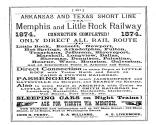 |
 |
 |
 |
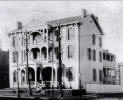 |
| Link
Memphis-Little Rock |
Lucy
Brinkley Hospital 1926 |
George
Vincent Hotel 1955 |
Lucy Brinkley
Ad |
Anne
Brinkley House |
|
|
|
|
The Lucy
Brinkley Hospital was a little 75 room non-sectarian hospital, for
white women only. It had a surgeon, 2 assistants, and a corps
of nurses. It also had an excellent reputation. In
1907 they built their new building at 855 Union, in the Medical
Center area. In the late 30s, that building was converted into
the Blackstone Hotel. In 1948, it became the George Vincent
Hotel. In 1956 the building was purchased by the University of Tennessee and converted into dormitories for medical students.
In 1975, it was demolished and the Dunn Dental Building now occupies
the site. |
|
|
|
|
 |
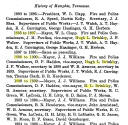 |
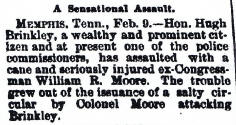 |
 |
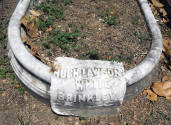 |
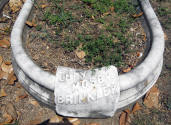 |
| 1899 Annex |
Politician |
Political-Assault |
1904 Obit |
Hu's Grave -
Elmwood |
Lucy's Grave
- Elmwood |
|
|
|
|
|
|
|
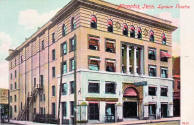 |
Lyceum Theatre
... 2nd and Jefferson
The very grand Lyceum Theatre was built by H. L. Brinkley in
1894 at 2nd and Jefferson. By all accounts, the interior was
lavishly decorated in a Spanish motif, with imperial green,
rich yellow, and gold. It was the first Memphis playhouse to
have electric lights. The first performance in 1894 was 'The
Count de Grammot', which opened to a packed house. The Lyceum
became the place to go, and night after night it was filled
with the elite of the city who sat in the box seats which were
known as The Golden Horseshoe. |
|
| |
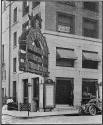 |
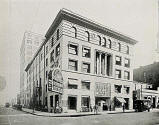 |
 |
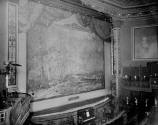 |
| Lyceum
1911 |
Lyceum 1916 |
Lyceum 1935 |
Lyceum Stage and Pit |
|
| |
|
In a very
short period, the Lyceum was considered the finest theater in
the South. The Hopkins Stock Company was the resident company.
All famous actors of the day appeared here: Maud Adams, Lillie
Langtry, Anna Held, George M. Cohan, etc. But in time, new
theaters opened downtown and the Lyceum began to decline. To
survive, it switched to vaudeville in 1919, and then to motion
pictures, and was the first Memphis Theatre to show movies on
a regular basis. Finally, it shifted to boxing and
burlesque. Ultimately it lost the battle to the downtown
theatres and closed in 1935. |
| |
 |
 |
 |
 |
 |
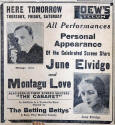 |
| 1910
Program |
1924 Lyceum Bill |
Lyceum Bill |
1898 Stock Players |
1908 Paderewski |
1918
Ad |
|
| |
|
The Lyceum is listed in
the Memphis Directories from 1899 up to 1935. In 1919-1920,
the name changed briefly to Loew's Lyceum. Loew's had
leased the theatre to show their films while the Loew's State
and Palace were being built downtown.
The Lyceum
was demolished shortly after closing in 1935. Today the site
of the Lyceum is occupied by Regions Bank Building. |
| |
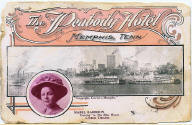 |
 |
 |
 |
 |
|
1909 Peabody
card-Lyceum Ad |
1897
CBC |
1916
Birth-Nation |
YWCA
1910s |
Methodist University Hospital |
|
|
|
|
|
|
|
"One thing
leads to another..." |
|
|
|
|
|
|
|
Hu Brinkley and Swami Vivekananda ...
Swami
Vivekananda was an Indian Hindu Monk and the key figure in the
introduction of the Indian philosophies of Vedanta and Yoga to
the Western World in the late 19th century. He is
credited with raising interfaith awareness and bringing
Hinduism to the status of a major religion. He came to
America in 1893 for an important speech in Chicago and stayed
through 1895 for speaking tours of the country. His
American tour included 10 days in Memphis, where he stayed at the
Ginny Moon boarding house on 3rd Street. His Memphis host was Hu L. Brinkley,
who lived at the same boarding house. During this visit, he made several speeches where
his universal message was one of tolerance and respect.
His fans came from everywhere and he attracted a huge
following similar to a modern Pop Star. |
 |
|
|
|
|
|
|
|
|
|
|
|
|
|
|
|
|
|
|
|
|
|
|
|
|
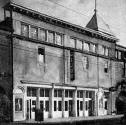 |
The Auditorium Theatre
In Memphis, Swami Vivekananda gave several speeches
at the Auditorium Theatre. The old Auditorium was
located about where the Chisca Hotel is now located. The
theatre's name was
changed to the better known Bijou Theatre in 1903.
It was
a very large and major Memphis theatre, which burned in 1911.
It was not rebuilt.
(Read more about this historic
theatre on the Theatre Page of this website). |
|
Auditorium - Bijou Theatre |
|
|
|
 |
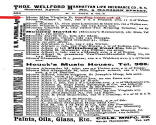 |
The Confederate Spy and her Memphis Boarding House
Virginia "Ginny" Moon
and her sister Lottie were Confederate spies during the
Civil War. They traveled back and forth between
the north and south carrying badly needed drugs under
their large hoop skirts. Ginny was caught
several times, but always managed to charm her way out
of it. She was finally imprisoned in New Orleans
shortly before the war ended. |
|
Ginny
Moon |
1894
Directory |
|
|
|
|
After the war, Ginny opened a boarding house - for men
only, where she continued to live her eccentric
lifestyle. She stressed liberal views,
hated Victorianism and was a stern supporter of
women's rights. She heroically stayed in the
city during the 1875 yellow fever epidemic and become
a heroine for helping the sick and the suffering.
When her black housekeeper died, she raised the lady's
son as her own, along with other orphans that she had
supported. Young men adored Ginny and her
boarding house was the favorite meeting place for
young intellectuals in Memphis.
|
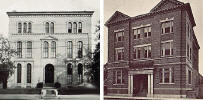 |
| |
Ginny's Boarding House |
|
| |
|
In
spite of advancing age, Ginny was still a strikingly
handsome woman, who always dressed in black silk with
bonnet and parasol, and chain smoked cigarettes -
all of which made her somewhat of an eccentric paradox.
Always restless, in the 1920's, she ended up in Hollywood
where, at the age of 75, she had bit parts in two movies,
"The Spanish Dancer" and "Robin Hood". From there
she headed east to New York and lived in the Bohemian
section of Greenwich Village. In September of 1925,
at the age of 81, Ginny was found dead on the floor of her
basement artist's flat. She was cremated and her
ashes returned to Memphis for burial at Elmwood Cemetery.
There is a historical marker for Ginny Moon in CONFEDERATE
PARK, but that park is being renamed in 2013 and the
marker will probably be removed or will "disappear". |
|
|
|
|
NOTE:
Before it was Ginny's Boarding House, this historic building
at 178 Third was the La Salette Academy from 1867 to 1893.
After Ginny's Boarding House, it was the 19th Century Club
from 1901 to 1926. No details after that date. |
|
|
|
|
|
|
|
|
|
|
|
|
|
|
Credits |
|
|
|
The
Historic-Memphis website does not intentionally post copyrighted
photos and material without permission or credit.
On
occasion a "non-credited" photo might possibly be posted because we
were unable to find a name to give credit. Because of the nature of
our non-commercial, non-profit, educational website, we strongly
believe that these photos would be considered "Fair Use. We have
certainly made no monetary gain, although those using this website
for historic or Genealogy research have certainly profited. If by
chance,
we have posted your copyrighted photo, please contact us, and we'll
remove it immediately, or we'll add your credit if that's your
choice. In the past, we have found that many photographers
volunteer to have their works included on these pages and we'll
also do that if you contact us with a photo that fits a particular
page. |
|
|
|
The "Historic-Memphis" website would like to acknowledge and thank the
following for their contributions which helped make this website
possible:
Memphis
Public Library, Memphis University Library, Memphis Law Library,
Memphis Commercial Appeal, Memphis Press Scimitar, Shelby County
Register of Deeds, Memphis City Schools, Memphis Business Men's
Club, Memphis Chamber of Commerce, Memphis City Park Commission,
Memphis Film Commision, Carnival Memphis, Memphis Historical
Railroad Page, Memphis Heritage Inc, Beale Street Historic District,
Cobblestone Historic District, Memphis Historic Districts, Vance
Lauderdale Family Archives, Tennessee State Archives, Library of
Congress, Kemmons Wilson Family, Richard S. Brashier, Lee Askew,
George Whitworth, Woody Savage and many individuals whose assistance is
acknowledged on the pages of their contributions. Special
thanks to Memphis Realtor, Joe Spake, for giving us carte blanche
access to his outstanding collection of contemporary Memphis photos.
We do not have high definition copies of the photos on these
pages. If anyone wishes to secure high definition photos,
you'll have to contact the photographer or the collector.
(To avoid any possibility of contributing to SPAM, we do not
maintain a file of email addresses for anyone who contacts us). |
|
|
|
|
|
|
|
|
|
|
|
|
|
|
|
|
|
|
|
|
|
|
| |
|
|
|